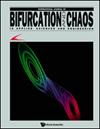阿利效应对异质环境中扩散流行病模型时空行为的影响
IF 2.3
4区 数学
Q2 MATHEMATICS, INTERDISCIPLINARY APPLICATIONS
引用次数: 0
摘要
在当前的研究中,我们建立了一个[公式:见正文]流行病模型,其中包含了阿利效应对模型系统时空动态的影响。在疾病传播过程中,易感个体和受感染个体之间会出现抑制作用,这种抑制作用用 Crowley-Martin 型发病率函数来衡量。广泛的分析探讨了系统的稳定性和不同的分岔情况,包括霍普夫分岔、鞍节点分岔、跨临界分岔和波格丹诺夫-塔肯斯分岔。我们还研究了这些分岔对拟议模型中参数变化的反应。时间模型进一步扩展到空间模型,以研究在交叉扩散系数不同值的情况下,阿利效应对模式形成的影响。研究得出了空间系统的静态解和全局稳定性。此外,考虑到传输速率是关键参数,还计算了图灵不稳定性、霍普夫分岔和图灵分岔。在异质环境中,无论是强阿利效应还是弱阿利效应,易感种群的空间分布都呈现出一种复杂的结构,在表面图中有平坦的表层和一些近似圆形的洞。为了进一步探讨不同交叉扩散系数值下阿利效应对模式发展的作用,对时间模型进行了空间扩展。此外,在计算图灵不稳定性以及霍普夫和图灵分岔时,还考虑了传输速率。我们进行了数值模拟,以验证空间和非空间模型的分析结果。我们目前的模型系统可以解释最近在濒危企鹅物种中发生的呼吸窘迫综合症。本文章由计算机程序翻译,如有差异,请以英文原文为准。
Impact of Allee Effect on the Spatio-Temporal Behavior of a Diffusive Epidemic Model in Heterogenous Environment
In the current study, we have formulated an [Formula: see text] epidemic model incorporating the influence of Allee effect on the dynamics of the model system in space and time. During the spread of the disease, inhibition among the susceptible and infected individuals is seen, which is measured using the Crowley–Martin type incidence function. Extensive analysis explores the system’s stability and different bifurcation scenarios, including Hopf, saddle-node, transcritical, and Bogdanov–Takens. We also examine how these bifurcations react to parameter variations within the proposed model. The temporal model has further been extended to a spatial one to investigate the impact of the Allee effect on the formation of patterns for different values of the cross-diffusion coefficient. The well-posedness of the stationary solution and the global stability of the spatial system are derived. Also, the Turing instability, Hopf, and Turing bifurcation are calculated considering the transmission rate as critical parameter. In a heterogeneous environment, the spatial distribution of the susceptible population shows a complex structure with flat tabular surface and a few almost circular holes in surface plots for both strong and weak Allee effects. To further explore the role of Allee effect on pattern development for various cross-diffusion coefficient values, the temporal model has been spatially extended. Additionally, the transmission rate is taken into account while calculating the Turing instability and Hopf and Turing bifurcations. We ran numerical simulations to validate our analytical results for both spatial and nonspatial models. Our current model system can explain the recent occurrence of respiratory distress syndrome in endangered penguin species.
求助全文
通过发布文献求助,成功后即可免费获取论文全文。
去求助
来源期刊
CiteScore
4.10
自引率
13.60%
发文量
237
审稿时长
2-4 weeks
期刊介绍:
The International Journal of Bifurcation and Chaos is widely regarded as a leading journal in the exciting fields of chaos theory and nonlinear science. Represented by an international editorial board comprising top researchers from a wide variety of disciplines, it is setting high standards in scientific and production quality. The journal has been reputedly acclaimed by the scientific community around the world, and has featured many important papers by leading researchers from various areas of applied sciences and engineering.
The discipline of chaos theory has created a universal paradigm, a scientific parlance, and a mathematical tool for grappling with complex dynamical phenomena. In every field of applied sciences (astronomy, atmospheric sciences, biology, chemistry, economics, geophysics, life and medical sciences, physics, social sciences, ecology, etc.) and engineering (aerospace, chemical, electronic, civil, computer, information, mechanical, software, telecommunication, etc.), the local and global manifestations of chaos and bifurcation have burst forth in an unprecedented universality, linking scientists heretofore unfamiliar with one another''s fields, and offering an opportunity to reshape our grasp of reality.

 求助内容:
求助内容: 应助结果提醒方式:
应助结果提醒方式:


